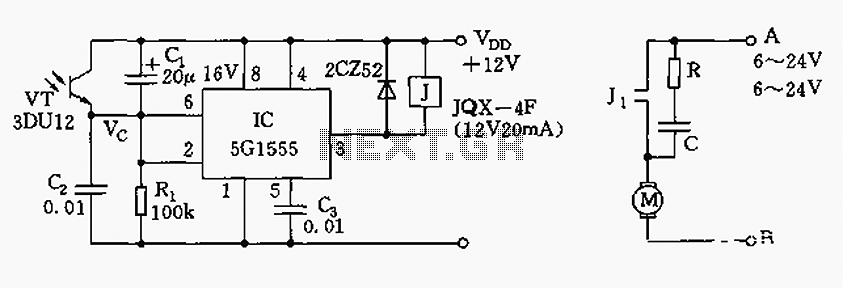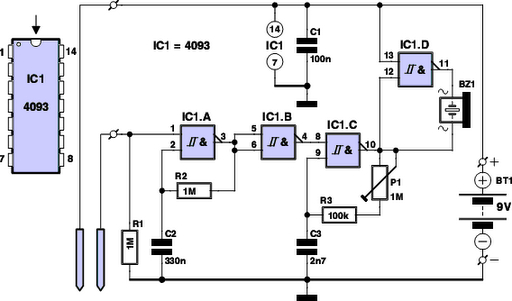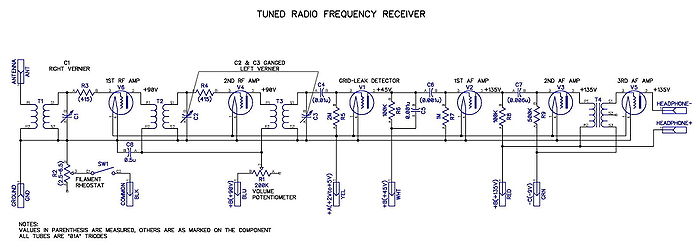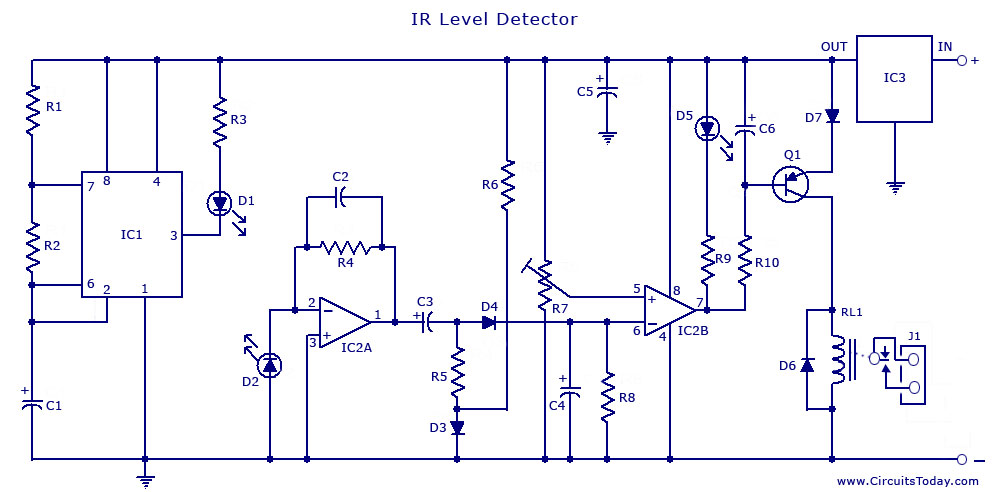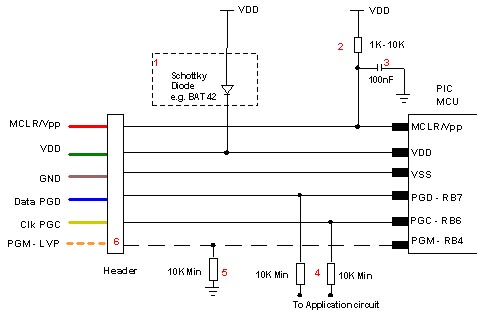
R-40-16 ultrasonic receiver circuit
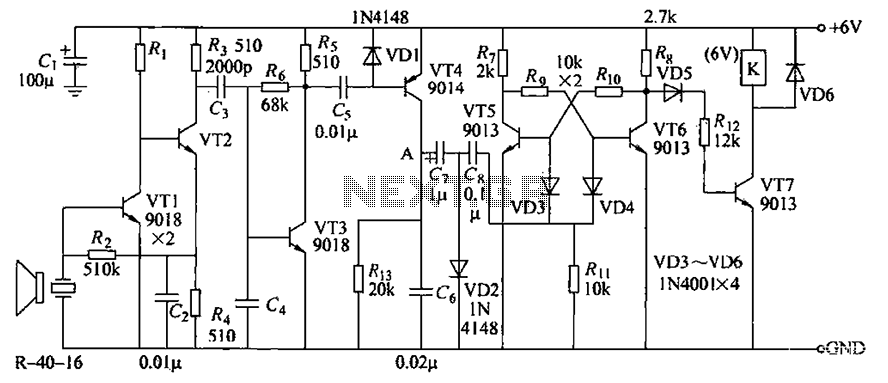
The circuit consists of transistors VT1 through VT7 and other components. Due to the weak signal received from the transmitter, the circuit employs a multi-stage amplifier to enhance the output. This output generates a square wave pulse signal to control VT5, which, along with associated components, manages the status of a bistable circuit. The transistor VT4 is activated once the transmitter emits a trigger signal, which is fed to the bistable circuit as a trigger pulse via capacitors G and C. This action causes VT5 and VT1 to alternate states. When VT5 is turned off, VT7 is also deactivated, resulting in the relay K being released and maintained in that state. Upon receiving the next pulse, VT6 conducts, turning off VT5, while VT7 is activated, pulling in relay K to control the load. This circuit can be utilized for the remote control of various electrical switches.
The described circuit operates as a remote control system utilizing a series of transistors for signal amplification and relay control. The multi-stage amplifier, consisting of transistors VT1 to VT3, is designed to boost the weak signal from the transmitter, ensuring reliable operation even at low signal levels. The output from this amplifier is a square wave pulse, which is essential for the bistable circuit operation.
The bistable circuit, controlled by transistors VT4 and VT5, functions as a flip-flop, allowing the circuit to maintain its state until a new trigger pulse is received. The trigger pulse is generated when the transmitter sends a signal, which is coupled through capacitors G and C to transistor VT4. This transistor is responsible for initiating the state change in the bistable circuit. When activated, VT4 allows current to flow, thus turning on VT5 and VT1, which switch the state of the relay K.
The relay K acts as a switch for the connected load, enabling or disabling it based on the state of the bistable circuit. When VT5 is turned off, VT7 is also deactivated, which releases the relay and maintains its state until a new pulse is received. The circuit's design allows for a seamless transition between states, ensuring that the load can be controlled remotely with minimal delay.
The use of transistors in this circuit provides advantages such as low power consumption and high reliability. Additionally, the circuit can be adapted for various applications, including remote control of lighting systems, motors, or other electrical devices, making it a versatile solution for automation needs. Circuit consists VTl. ~ VT7 and other components. Since receiving the signal emitted by the transmitter is very weak emblem, the circuit uses multi -stage amplifier, the output square wave pulse signal to control VT5,1n fly and associated components work status bistable circuit, the transistor VT4 each turned once ( transmitter emits a) trigger signal by G, C fed to the bistable circuit a trigger pulse, VT5, V; 113 a reversal times. When VTfi; when is turned off from, VT5, VT7 closing, relay K release amnesty and maintained. When the next pulse arrives, VT6 by the conduction is turned off. VT7 conduction, the relay pull-K, control the work load. This circuit can be used for remote control of various electrical switches.
The described circuit operates as a remote control system utilizing a series of transistors for signal amplification and relay control. The multi-stage amplifier, consisting of transistors VT1 to VT3, is designed to boost the weak signal from the transmitter, ensuring reliable operation even at low signal levels. The output from this amplifier is a square wave pulse, which is essential for the bistable circuit operation.
The bistable circuit, controlled by transistors VT4 and VT5, functions as a flip-flop, allowing the circuit to maintain its state until a new trigger pulse is received. The trigger pulse is generated when the transmitter sends a signal, which is coupled through capacitors G and C to transistor VT4. This transistor is responsible for initiating the state change in the bistable circuit. When activated, VT4 allows current to flow, thus turning on VT5 and VT1, which switch the state of the relay K.
The relay K acts as a switch for the connected load, enabling or disabling it based on the state of the bistable circuit. When VT5 is turned off, VT7 is also deactivated, which releases the relay and maintains its state until a new pulse is received. The circuit's design allows for a seamless transition between states, ensuring that the load can be controlled remotely with minimal delay.
The use of transistors in this circuit provides advantages such as low power consumption and high reliability. Additionally, the circuit can be adapted for various applications, including remote control of lighting systems, motors, or other electrical devices, making it a versatile solution for automation needs. Circuit consists VTl. ~ VT7 and other components. Since receiving the signal emitted by the transmitter is very weak emblem, the circuit uses multi -stage amplifier, the output square wave pulse signal to control VT5,1n fly and associated components work status bistable circuit, the transistor VT4 each turned once ( transmitter emits a) trigger signal by G, C fed to the bistable circuit a trigger pulse, VT5, V; 113 a reversal times. When VTfi; when is turned off from, VT5, VT7 closing, relay K release amnesty and maintained. When the next pulse arrives, VT6 by the conduction is turned off. VT7 conduction, the relay pull-K, control the work load. This circuit can be used for remote control of various electrical switches.
